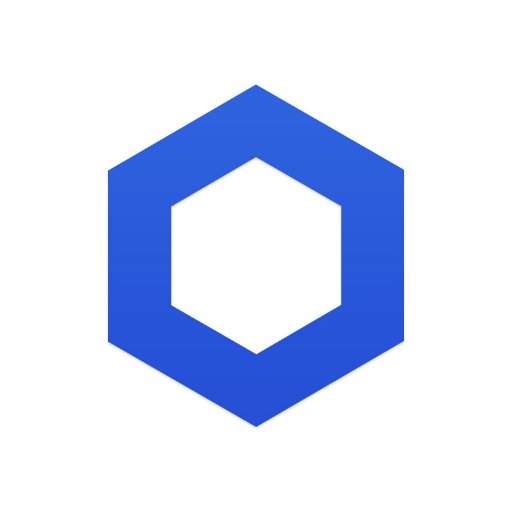Chainlink Cross-Chain Interoperability Protocol Launches Mainnet, Overview of Its Technical Features and Application Scenarios
Author: Kemal El Moujahid
Source: Chainlink Oracle
We are very excited to announce that Chainlink Cross-Chain Interoperability Protocol (CCIP) has officially launched on Avalanche, Ethereum, Optimism, and Polygon, kicking off the early access phase of the mainnet. Several mainstream DeFi protocols in the derivatives and lending space have integrated CCIP. Among them, Synthetix has gone live on the CCIP mainnet; additionally, BGD Labs has officially integrated the mainnet CCIP into the Aave protocol.
Apply for early access to the mainnet
CCIP will be open to all developers on five testnets starting July 20, including Arbitrum Goerli, Avalanche Fuji, Ethereum Sepolia, Optimism Goerli, and Polygon Mumbai.
Connecting the Multi-Chain World
Web3 has now entered the multi-chain era. There are hundreds of blockchains, L2s, sidechains, subnets, appchains, and parachains for developers and users to choose from. These emerging on-chain ecosystems drive innovation and technology adoption, but they also disperse applications, on-chain assets, and market liquidity across various isolated networks. Furthermore, existing cross-chain solutions are diverse, with protocols and blockchains adopting various technology stacks, which often lack security, leading to over $2 billion in cross-chain asset thefts. The lack of interoperability hinders innovation and slows down the mass adoption of Web3.
However, solving this problem is fraught with challenges. We must not only develop good products but also establish standards that the entire industry can follow to achieve interoperability and composability. Creating cross-chain standards requires balancing security, flexibility, and community support. Security is paramount because the process of transferring assets across chains cannot afford any mistakes. Flexibility is necessary because this standard must apply to all potential use cases and be compatible with all deployed blockchains. The last aspect is community support, meaning that this standard must be adopted by a broad base of community members to have value.
Chainlink has established a unified industry standard for Web3 data. With the support of all users and partners, we have built a strong community. In summary, Chainlink has a unique advantage to further expand upon the established standards to solve cross-chain issues and drive a new wave of innovation in Web3.
Web 2 requires the TCP/IP protocol to connect isolated computer networks. Similarly, Web3 needs interoperability standards to connect isolated blockchain networks.
CCIP is the most secure, reliable, and easy-to-use interoperability protocol for building cross-chain applications and services. Developers can use the Arbitrary Messaging feature to flexibly create their own cross-chain solutions. Moreover, CCIP also enables Simplified Token Transfers. Thus, protocols can transfer tokens across chains using audited token pools they control, without the need for custom code, and in much less time than developing a cross-chain bridge from scratch.
CCIP is powered by Chainlink's decentralized oracle network, which has an impressive track record, securing billions of dollars in assets and facilitating over $8 trillion in on-chain transaction value. CCIP shares the same infrastructure as other services already launched by Chainlink, so there is almost no need to add new trust assumptions. If a dApp has already integrated Chainlink Price Feeds, there is no reason not to choose CCIP for cross-chain interactions. CCIP also adds additional security mechanisms that other cross-chain solutions cannot match, such as the ability to set a rate limit on the number of tokens transferred across chains.
Additionally, an Active Risk Management (ARM) network has been established to monitor the validity of all cross-chain transactions.
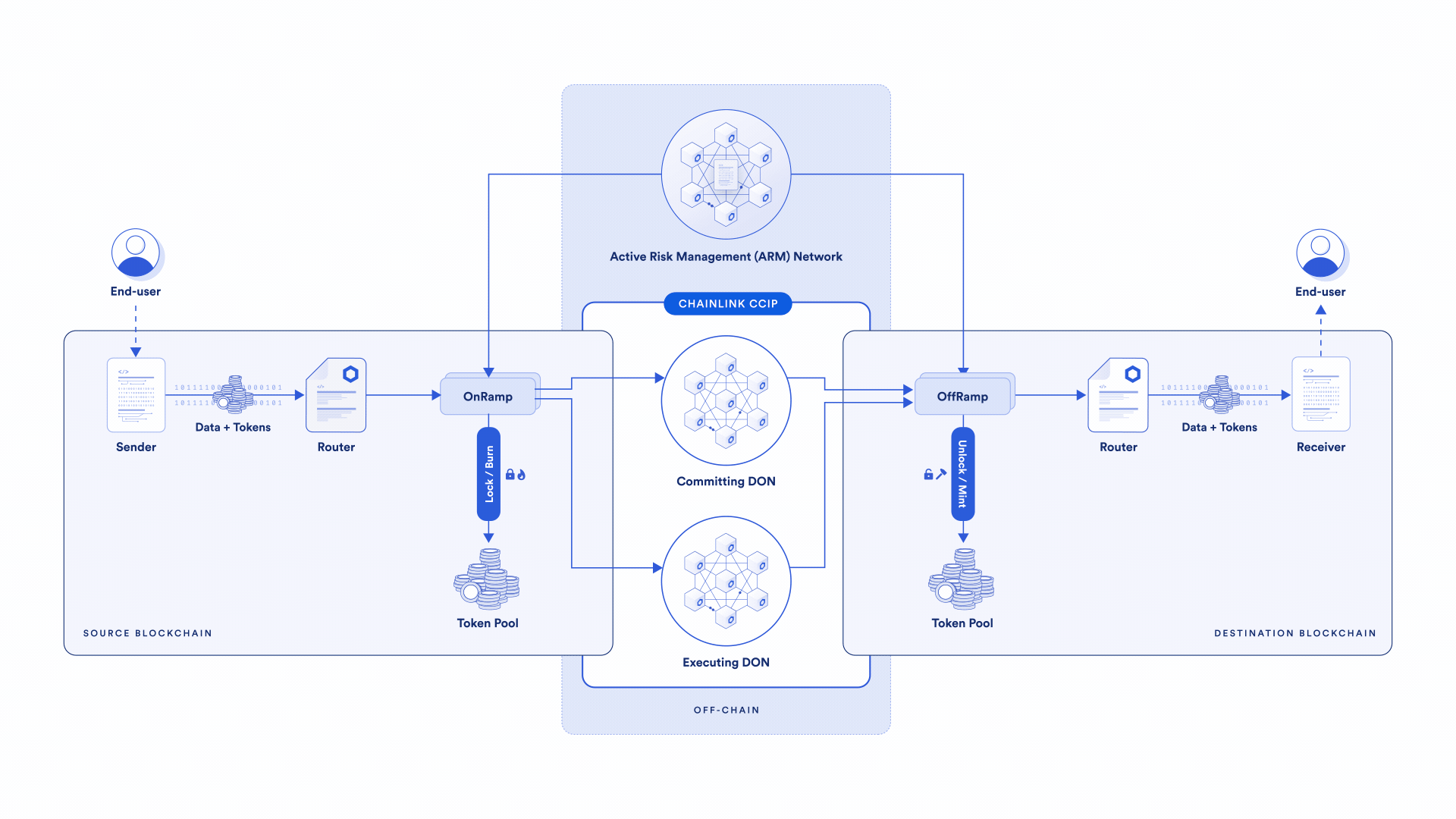
CCIP connects various public and private chains to create an interconnected Web3 world
Developers, applications, and enterprises can use CCIP to unlock a range of use cases, such as:
- Cross-chain token assets: Transfer tokens across chains from a unified interface without needing to develop a cross-chain bridge.
- Cross-chain collateral assets: Launch cross-chain lending applications where users can deposit collateral on one chain and borrow assets on another.
- Cross-chain liquid staking tokens: Transfer liquid staking tokens across different blockchains to enhance their utilization in DeFi applications on other chains.
- Cross-chain NFTs: Users can mint NFTs on one chain and receive them on another.
- Cross-chain account abstraction: Develop smart contract wallets integrated with CCIP to enhance user experience for cross-chain calls. For example, users can sign transactions on any blockchain using the same wallet.
- Cross-chain gaming: Create gaming experiences that span any blockchain, allowing players to store high-value in-game items on a more secure chain while performing game operations on a more scalable chain.
- Cross-chain data storage and computation: Develop data storage solutions where users can store any data on the target chain and perform computations based on transactions on the original chain.
Mainstream applications in the market are using CCIP for cross-chain interactions
Synthetix integrates CCIP for cross-chain liquidity
Synthetix is a DeFi protocol that provides liquidity for on-chain derivatives and financial instruments. Synthetix V3 recently added the Synth Teleporter feature, allowing users to easily transfer Synth liquidity across chains. The process involves burning sUSD (the accounting unit of the Synthetix protocol) on the original chain and then minting an equivalent amount of sUSD on the target chain.
The Synth Teleporter uses Chainlink CCIP to securely and reliably burn and mint tokens across chains. This unique model effectively enhances capital efficiency without the need to create liquidity pools. The Synth Teleporter allows Synthetix's liquidity to flow to where it is most needed while avoiding the limitations of traditional token bridges.
"Security is crucial for cross-chain asset transfers. That's why we integrated Chainlink CCIP into the cross-chain Synth Teleporter. We were among the first users of Chainlink Data Feeds, so we are also very excited to be among the first users of CCIP, unlocking new functionalities for Synthetix." ------ Kain Warwick, founder of Synthetix
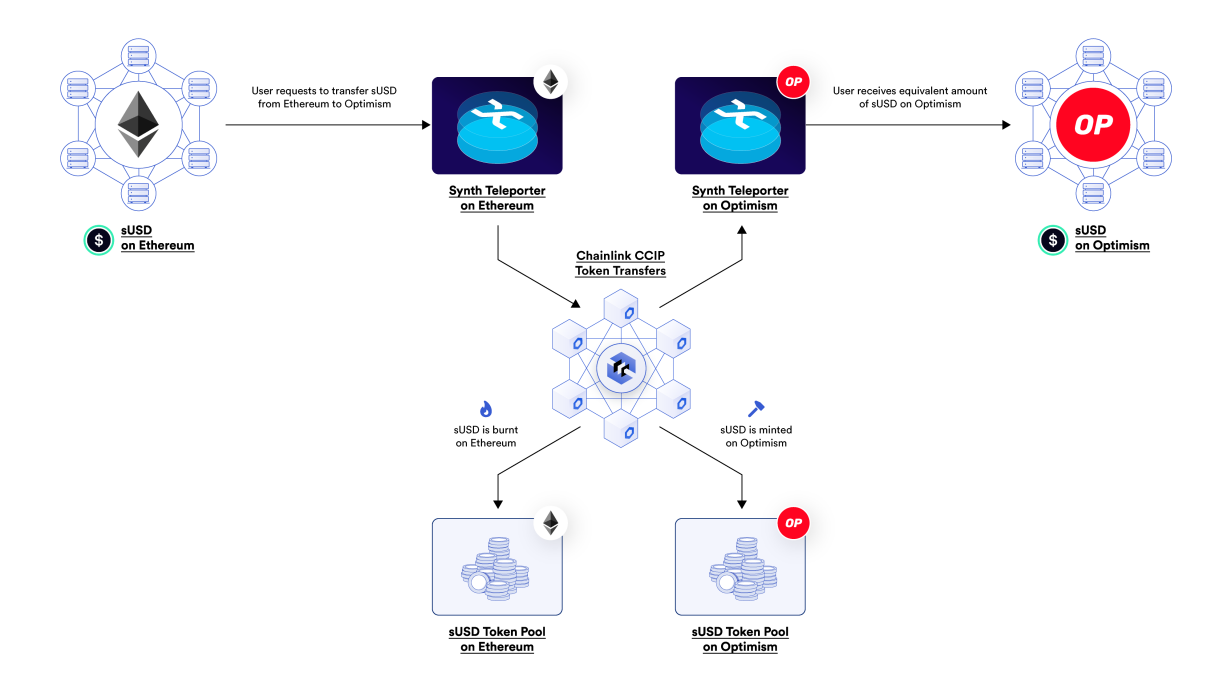
With CCIP, Synthetix can securely transfer tokens across chains using a burn-and-mint model
Aave adopts CCIP for cross-chain governance
Aave is a non-custodial liquidity protocol that allows users to borrow and lend assets on-chain. Aave previously natively integrated several cross-chain bridges for cross-chain governance, using Ethereum as the voting network. This cross-chain architecture not only made voting costs for participants very high but also resulted in extremely high development and maintenance costs. As soon as Chainlink CCIP was launched, the Aave community voted to integrate CCIP due to its lower gas fees, mature infrastructure, and ease of expansion to new networks. Therefore, BGD Labs (a Web3 development initiative) is integrating Chainlink CCIP into Aave Governance V3 to meet future cross-chain governance needs.
"We are very excited to integrate Chainlink CCIP into the next iteration of the Aave protocol, enabling secure, reliable, and scalable cross-chain communication. CCIP can seamlessly integrate into our cross-chain governance mechanism, allowing us to save a lot of development time and focus more on core feature development." ------ Ernesto Boado, co-founder of BGD Labs

With CCIP, Aave can execute governance resolutions across different blockchains
Achieving cross-chain interactions for capital markets
CCIP is a blockchain abstraction layer that allows enterprises to connect any public and private chain directly from backend systems and achieve interoperability. Swift has partnered with dozens of financial institutions and financial market infrastructure providers to begin exploring CCIP, transferring tokens across various public and private chains based on Swift's existing messaging infrastructure. Institutions participating in the blockchain interoperability collaboration include ANZ, BNP Paribas, BNY Mellon, Citibank, Mingxin Bank, European Clearing Bank, Lloyds Banking Group, SIX Digital Exchange (SDX), and the Depository Trust & Clearing Corporation (DTCC).
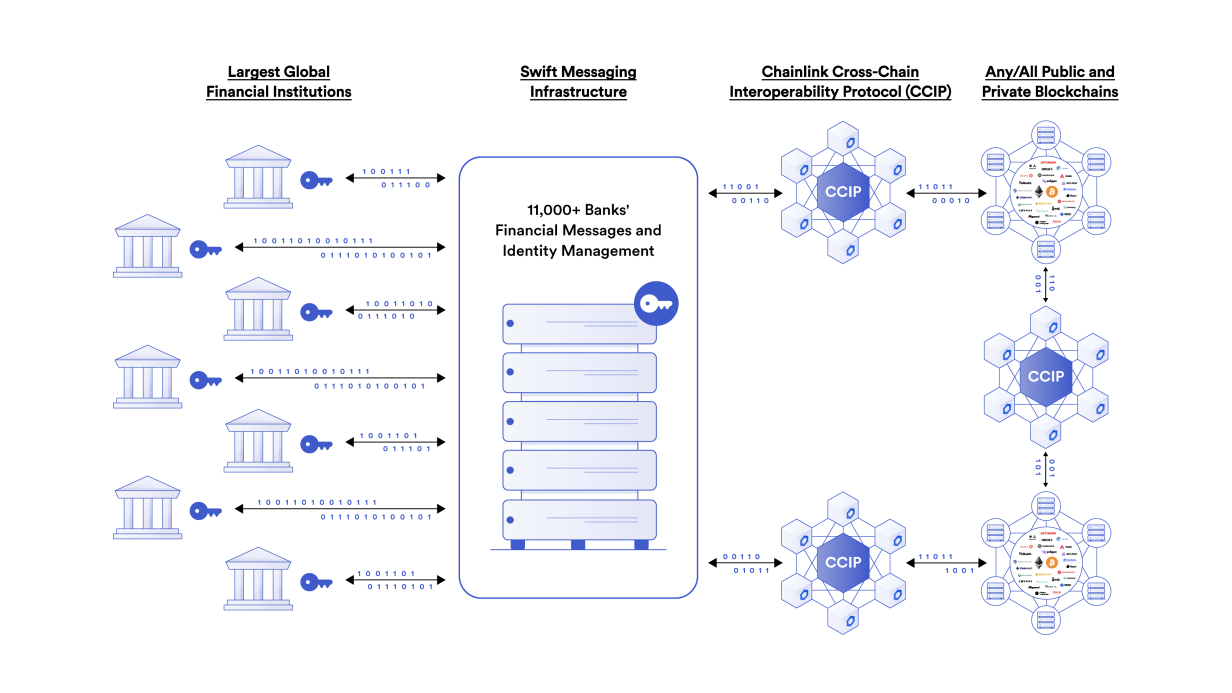
A simple illustration of how banks and financial market infrastructure adopt CCIP through the Swift network
Establishing new standards in cross-chain functionality, security, reliability, and user experience
Here are the features that differentiate CCIP from other cross-chain solutions:
Simplified Token Transfers
CCIP's Simplified Token Transfers is a plug-and-play solution that includes audited token pool contracts. These contracts are responsible for handling the burning/minting or locking/unlocking of cross-chain tokens, and token owners have complete control over their token pool contracts. Simplified Token Transfers also sets additional security features (such as cross-chain token quantity limits) and enhances the composability of the protocol's native tokens, allowing ecosystem partners to easily cross-chain through the CCIP interface and develop new functionalities for protocol tokens.
Programmable Token Transfers
While transferring tokens, additional instructions can be added to define the use of tokens in smart contracts on the target chain, such as immediately exchanging or staking tokens once they arrive on the target chain. With programmable functionality, messages (i.e., tokens + data) become atomic cross-chain transactions, and when instructions are executed on the target chain, it can always be assumed that the tokens are available.
Active Risk Management (ARM) Network
ARM is a standalone network that continuously monitors and verifies the CCIP network. This network is responsible for independently verifying cross-chain processes and identifying errors, thus providing an additional layer of security. The ARM network implements a minimized version of Chainlink node software in Rust. This enhances client diversity and robustness while minimizing external dependencies to avoid supply chain attacks.
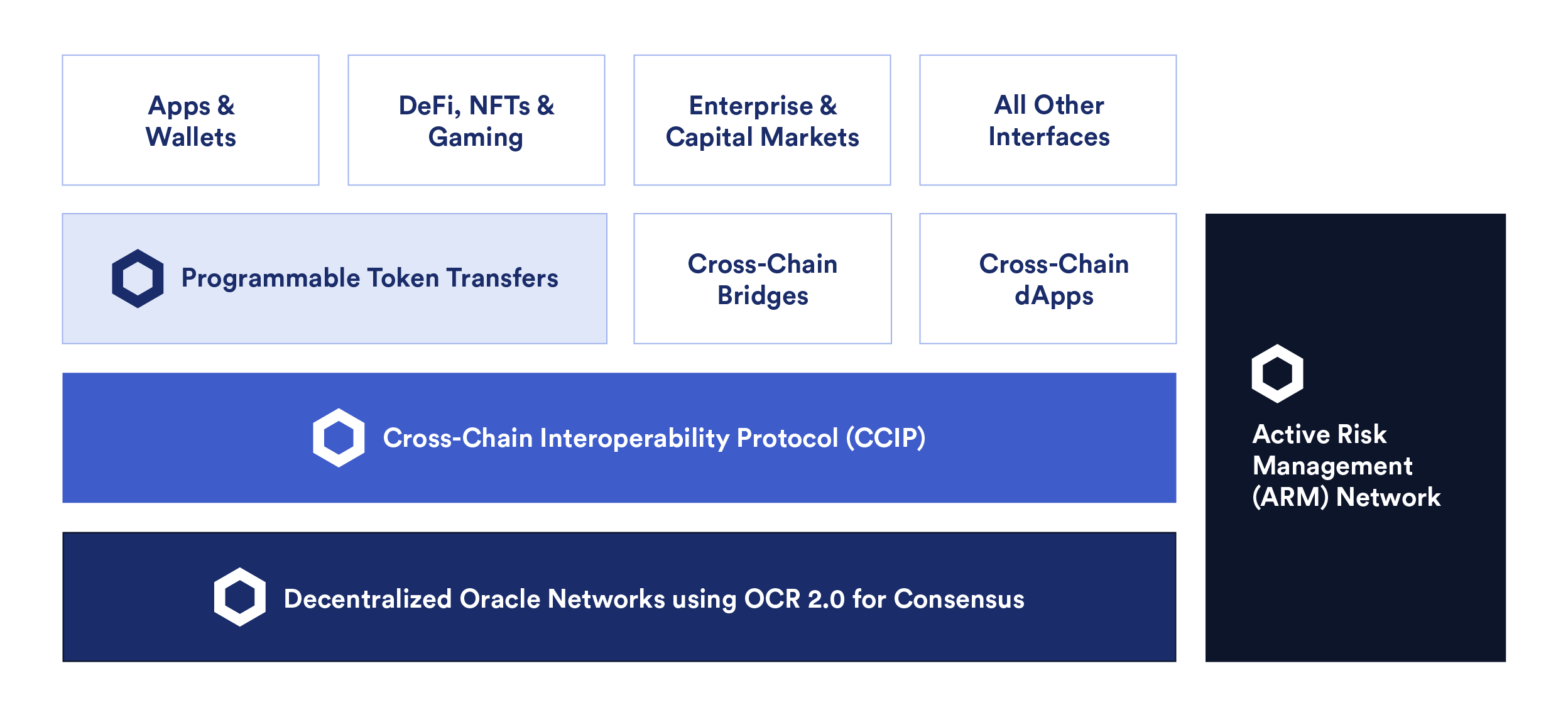
CCIP's cross-chain technology stack
Cross-chain Token Quantity Limits (Rate Limits)
CCIP can flexibly set limits on the number of tokens transferred across chains within a certain time frame. This parameter can be set individually for a specific token in a cross-chain channel and coordinated with the token issuer. Additionally, a unified limit can be set for the total number of tokens across all tokens in a cross-chain channel to ensure that attackers cannot simultaneously reach the individual limits for each token. This functionality is included in the CCIP codebase, which has undergone rigorous auditing. Only CCIP Token Transfers can utilize this feature, while Arbitrary Messaging cannot.
Smart Execution
CCIP employs a gas fee lock payment mechanism, known as Smart Execution, to ensure that cross-chain transactions are not affected by fluctuations in gas fee rates on the target chain. For developers, this means they only need to pay on the original chain, and CCIP will handle execution on the target chain.
Upgrades using Time-Locked Smart Contracts
All significant on-chain configuration updates and upgrades for CCIP must go through a time-locked smart contract. During this period, proposals can be vetoed by a threshold number of CCIP node operators. Additionally, updates can be directly approved by a threshold number of node operators, in which case they do not need to go through the time-lock contract. Therefore, users and protocols using CCIP can thoroughly research and make judgments before updates take effect. On-chain updates that are not vetoed during the time-lock window can be executed by anyone. The community can run a timelock-worker to handle executable upgrades. This on-chain upgrade model marks another step towards decentralization and robustness for the Chainlink network.
Payment Models
In our recent blog posts “Chainlink Network Outlook for 2023” and “Sustainable Oracle Economic Models”, we mentioned that we are developing an enhanced payment model to establish monetization mechanisms and ensure the long-term sustainability of Chainlink services. One of the main goals is to lower the payment threshold for dApps, enterprises, and end-users while attracting more fee revenue for Chainlink service providers.
As CCIP evolves into the industry's most secure and user-friendly cross-chain solution, fee payment scenarios will emerge across various blockchains, making it essential to lower payment thresholds for CCIP to rapidly expand to more blockchains. CCIP supports payments in LINK and other tokens, with other tokens including on-chain native tokens and ERC20-wrapped versions of those tokens. Payment rates for other tokens are higher compared to payments made in LINK.
We are developing an on-chain automatic exchange system that will automatically convert other tokens into LINK when paying with them. Before this exchange system goes live, when users pay with other tokens, the tokens will be withdrawn to their respective maintenance pools and replaced with LINK in the CCIP contract, with the amount of LINK calculated based on the exchange rate at the time of payment. Finally, LINK will be used to pay service providers (i.e., node operators). Once the on-chain automatic exchange system is live, other token assets stored in the maintenance pools will be converted into LINK.
CCIP's messaging transmission function charges a fixed fee per message, while the CCIP token transfer function charges a certain percentage of the token value. Additionally, CCIP fees include gas fees. When paying with other tokens, the fees will be 10% higher than when paying with LINK. Currently, CCIP's fees align with industry standards for cross-chain ecosystems, but fees may be adjusted in the future.
As the scope of Chainlink Staking continues to expand, covering more oracle services including CCIP, we plan to distribute a portion of user fees to stakers as a reward for their contributions to the security of Chainlink's crypto-economics.
CCIP Summer is Coming
After CCIP opens to the public on the mainnet, we will launch CCIP Summer, featuring a series of online and offline CCIP events and workshops around the world. Stay tuned for:
We have also initiated a phased onboarding process, allowing developers participating in the testing program to gain priority access to the mainnet. We adhere to a security-first principle, closely monitoring all dimensions of CCIP and the ARM network, and providing hands-on technical support to ensure a smooth user experience. Additionally, we will continue to collaborate with various token issuers and dApps to integrate more tokens with CCIP in the future.
Once cross-chain connectivity issues are resolved, it will trigger an unprecedented wave of innovation in the Web3 space. We look forward to continuing to build cross-chain standards with the community.
CCIP will launch on testnets on July 20. To receive notifications promptly, please click here to sign up. For a deeper understanding of the underlying architecture and code of CCIP, please refer to the CCIP Developer Documentation.
Disclaimer: The content of this article is for reference only and involves future development plans, such as product features, development work, and timelines for feature releases. These contents are merely forecasts reflecting current expectations and viewpoints. These expectations are based on assumptions and carry risks and uncertainties, which may change at any time. Chainlink CCIP is currently in the "early access" phase of the mainnet, meaning that the current functionalities of Chainlink CCIP are not complete, and subsequent versions may undergo changes. Although the content of this article is based on rational assumptions, we cannot guarantee that the final results will align with the concepts presented herein. All content in this article is valid only on the date of its initial publication. Due to the unpredictability of actual user feedback and future events, the content of this article may deviate from subsequent actual situations, and we may not make corresponding modifications in this article. Chainlink CCIP is a messaging transmission protocol that does not hold or transfer any assets. Please read the section on token pools in the Chainlink CCIP documentation to understand the various mechanisms involved in cross-chain token transfers. Please refer to the Chainlink User Terms for important disclosures.*





